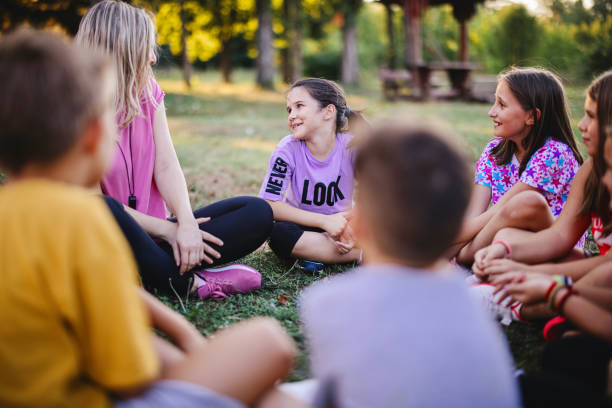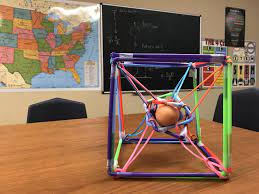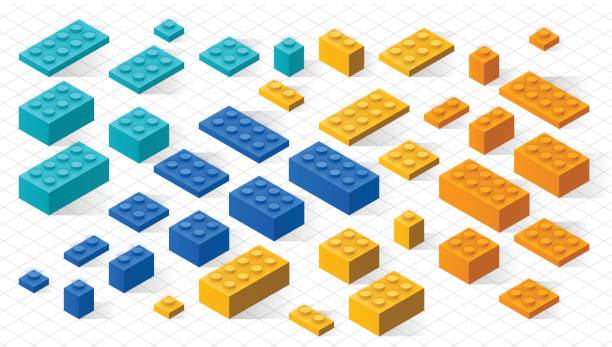25 Amazing Name Games For Kids in 2023: Fun and Educational Activities
Name games are a fantastic way to engage children in interactive and educational activities. Whether in a classroom setting, at a birthday party, or during a family gathering, name games encourage creativity, build social skills, and promote a sense of belonging.
In 2023, with advancements in technology and the growing importance of digital learning, we have witnessed the emergence of exciting new name games that incorporate both traditional and modern elements.
In this blog post, we will explore 25 amazing name games that are sure to captivate children and make learning a joyful experience.
From classic games with a twist to innovative digital activities, these name games will spark children’s imagination and help them develop important cognitive, linguistic, and social skills.
Table of contents
What is Name Games?
Name games is a game primarily for kids where everyone stands in a circle and introduces themselves, with the first person saying their name, the second person saying both their own name and the first person’s name, the third person saying both their own name and the second person’s name, and so on.
Can you picture the last member of the group feeling?
Why Name Games For Kids?
Playing name games can be quite beneficial. I always like it when people tell me interesting facts about themselves so I can connect their names to their distinctive characteristics.
Include these enjoyable name-game exercises to help unify the class because most kids love to talk about things they are interested in.
Also, participants have the chance to discover more about themselves and about one another through this activity.
The themes of self-identity and knowledge of one’s cultural or ethnic heritage are introduced right away in the exercise.
25 Amazing Name Games For Kids in 2023

1. Name Rainbow
Materials needed: Colored markers, sizeable white paper, or poster board.
Name Rainbow is a colorful twist on the classic “Name Game.”
Ask each child to write their name using a different colored marker. Then, arrange the names in a curved line to create a rainbow effect.
This game promotes name recognition, fine motor skills, and color identification.
2. Name Treasure Hunt
Materials needed: Small objects, clue cards, large space (indoor or outdoor).
Name Treasure Hunt is a thrilling game that combines name recognition with the excitement of a treasure hunt.
Hide small objects around the designated area and create clue cards with each child’s name on them.
Children must solve the clues to find the hidden treasures associated with their names. This game enhances problem-solving abilities, teamwork, and memory skills.
3. Name Bingo
Materials needed: Bingo cards with children’s names, and markers.
Name Bingo is a classic game with an educational twist. Create Bingo cards with each child’s name in a randomized pattern.
Call out the names, and children must mark the corresponding names on their cards. This game improves name recognition, concentration, and listening skills.
4. Name Puzzles
Materials needed: Craft sticks, markers, adhesive labels.
Name Puzzles are a fantastic hands-on activity for children to practice spelling and sequencing. Write each child’s name on a craft stick, using one stick for each letter.
Cut adhesive labels into individual letters and mix them up.
Children must arrange the letters on their craft sticks to spell their names correctly. This game enhances fine motor skills, letter recognition, and problem-solving abilities.
5. Name Relay
Materials needed: Cones or markers, large space (indoor or outdoor).
Name Relay is an active and energetic game that promotes teamwork and cooperation. Divide children into teams and assign each team member a number.
Set up cones or markers with each child’s name on them at a distance.
Children must run to the markers, call out the corresponding names, and return to their team before the next member goes.
This game improves name recall, communication, and physical coordination.
6. Name Charades
Materials needed: Pieces of paper with children’s names.
Name Charades is a fun game that combines name recognition with acting skills. Write each child’s name on a piece of paper and place them in a hat or container. Children take turns drawing a name and must act out clues for others to guess. This game enhances creativity, communication, and social interaction.
7. Name Origami
Materials needed: Origami paper, markers.
Name Origami is a creative game that introduces children to the art of paper folding while reinforcing name recognition.
Provide each child with a sheet of origami paper and ask them to fold it into various shapes or animals. Then, they
can use markers to write their names on the folded creations. This game improves fine motor skills, creativity, and spatial awareness.
8. Name Scavenger Hunt
Materials needed: Clue cards, and small objects related to each child’s name.
Name Scavenger Hunt is an exciting game that combines name recognition with the thrill of a scavenger hunt. Create clue cards with riddles or descriptions related to each child’s name.
Hide small objects associated with their names throughout the playing area.
Children must solve the clues to find the items specific to their names. This game enhances problem-solving abilities, critical thinking, and collaboration.
9. Name Rhyme
Name Rhyme is a simple yet engaging game that promotes phonemic awareness and creativity. Each child takes turns saying their name and then coming up with a word that rhymes with it.
The game continues in a circle, with each child building upon the previous names and rhymes. This game improves phonetic skills, memory, and imagination.
10. Name Story
Name Story is an imaginative game that encourages storytelling and listening skills. Begin with a sentence such as, “Once upon a time, there was a child named [name].”
Each child adds a sentence to the story, incorporating their names creatively. The game continues until a unique and exciting story is created.
This game enhances language development, narrative skills, and teamwork.
11. Action Syllables
Ask the children to form a circle. Each player is instructed to recite their name aloud while choosing an action for each word.
For instance, since Alice’s name has two syllables, she might stomp her left foot for “-ice” and then gesture to the sky for “Al”.
Once Alice has finished stating her name, ask everyone to repeat it while performing the gestures.
The group should repeat the second name/action combination when the second person has finished speaking, and then they should repeat Alice’s.
Repeat for the third person, then continue in the same manner until all names have been spoken.
12. Hobbies Name Game
Tell the kids to form a circle and stand there. The first player to say, “My name is ___and I like to___,” will start the game.
The person should make a movement that corresponds to their hobby as they describe it.
For instance, if swimming is their pastime, they would move their arms to mimic swimming. Ask the group to act out the swimming action while repeating, “__ likes [swimming]”.
The second individual should then introduce themselves and do their preferred pastime.
Once the speaker is done, ask the group to repeat the names and interests of the second person before the first.
Repeat for every kid until everyone in the circle has said their name and hobby.
13. Favorite Foods
The group should form a circle and stand together. Someone should start by stating their name and the name of a meal that begins with their name’s initial letter.
The second participant in the circle should introduce themselves and their dish before repeating what was said by the first.
The process should be repeated by the third with the knowledge from the second and first people, and so on until everyone has had a turn.
14. Web of Names
Take a sizable ball of easily unrevealable string for this game. Instruct everyone to form a circle and make sure to remind them that they must stay seated for safety.
One person should grasp onto the string’s tip and then declare their name to begin. The individual should toss the string ball to a different individual while continuing to hold onto the thread.
The second individual should then introduce themselves before passing the string ball to a third person.
The crisscrossing strand will begin to create a web as the game progresses.
The group then starts to unravel the web by stating the name of the person who came before them while hurling the ball of thread toward the individual, which is when the fun really begins.
Before throwing the string ball to the person ahead of them, each participant must wound the string ball back up.
15. Getting To Know Me
You’ll need a medium-sized, simple-to-catch, and throwable ball for this game.
Tell the children to form a big circle and stand there. Create five questions with facts you wish to learn about one another as a group, such as:
Tell me your name.
You were born where?
What is your preferred cuisine?
What color is your favorite?
What is your preferred pastime?
Give the first player the ball once the group has decided on the questions. Tell them to introduce themselves, respond to the questions, and then pass the ball to an additional player of their choosing.
After saying their name and responding to each question, the ball-catcher must then pass it to a third player who also responds.
Play on until everyone has responded to the questions. Make sure no one answers the questions more than once.
16. Capture The Balloon
Each youngster in the group will need a balloon, plus one or two more in case a balloon pops, to participate in this game.
Each child should decorate a balloon with markers after writing their name on it. Place all of the balloons in a bag, box, or container.
Play some entertaining kids’ music before simultaneously releasing all of the balloons into the air. Encourage the kids to keep the balloons in the air by batting them around.
The kids should “capture” a balloon and freeze in place until the music ends.
Ask each child to read the name that is written on the balloon they are holding one at a time.
After being summoned, the youngster must respond to a question about themselves that was predetermined at the start of the game. What is your favorite food? is one example of a good inquiry.
When you grow up, what do you hope to be? What would you do for a day if you could do anything?
Continue doing this until each youngster has shared.
17. Thanks For The Compliment
You’ll need enough paper, markers, and tape for everyone in the group to participate in this game.
The name of a youngster from the group should be written in marker at the top of each piece of paper.
Start by attaching the piece of paper with the child’s name to the back of each child. Give each youngster a marker, then instruct them to form a circle.
In order to begin the game, instruct each child to circle the room and choose a new opponent.
Once a player is chosen, the youngster should write a kind word or compliment about them on the piece of paper attached to their back.
Players should go back to their respective positions in the circle once everyone has completed.
Each child should turn to the right and take the paper from the person in front of them.
Have the kids read off the name of the person to their right along with the compliment or encouraging statement one at a time.
Depending on how long the group has known one another, remarks might be either generic or quite particular.
18. Basic Name Game
For kids who have never met previously, this is a nice beginner’s name game. Additionally excellent for ESL students.
You’ll need an easy-to-throw ball. Make a big circle with all the children seated cross-legged. Holding the ball, point to yourself and state your name.
Then, proceed around the circle and have each child speak their name.
To give everyone an opportunity to memorize names, go around the circle a few times.
When ready, have each pupil pass the ball to a different pupil. The student who successfully catches the ball must identify the student who tossed it.
Continue until everyone has had a chance to recall the name of someone else.
19. Name Memorizing Game
For kids who have never met before, this is a straightforward game. Make a big circle with all the kids seated cross-legged.
Say “My name is [Ms. Walker]” at the outset. and then respond to a personal question. You might say, “My name is Ms. Walker, and I like the color purple.”
The next person in the circle may introduce themselves by saying, “My name is [Alessandra], I’m 8 years old, and this is Ms. Walker; she likes the color purple.”
The person following that can introduce themselves as Cho and say, “My name is Cho and I like to dance. This is Alessandra and she is 8 years old.
This is Ms. Walker and she likes the color purple.” Circulate once more until everyone has had an opportunity to share their name and questions.
20. Name Alliteration
Select a category for the game to begin, such as cartoon characters, fruit varieties, or animals.
Ask the children to think of a word from the category that begins with the same letter as the initial letter of their name while sitting cross-legged in a big circle.
For instance, children may select “Cow Carla” or “Betty Bugs Bunny”.
One child should first say their name before naming the object they have selected. Following the first child’s name and object, the following child in the circle will say their name and object.
When each child in the circle has had a turn, the third child will speak their information along with the information for the first two children.
21. Reporter
To play this game, divide the group into pairs and instruct them to “interview” each other by requesting three questions in advance as well as the person’s name.
For instance, you may choose to enquire about their favorite dish, color, or animal.
When the class is done, have the children take turns introducing their partners by name and discussing the lessons they learned.
22. Who’s Out?
Have everyone get up and form a circle for the game. Inform them that you will make a statement about them and that if it is true, they must sit down.
Say, “Sit down if you have a cat,” or “Sit down if you have a sister.”
Ask each child to announce their name and further describe the sentence after the children have seated themselves.
As an illustration, one child might say, “My name is Jared, and my sister’s name is Malia.”
23. Going on Vacation
Invite the children to stand or sit in a circle. Say your name and the name of the location you want the students to visit right now.
For instance, “Hello, I’m Ms. Louboutis, and I’m bringing the class to China. A digital camera is being carried by Ms. Louboutis.
The first student to begin should then introduce themselves, pick an object to carry that starts with their first name’s initial, and then briefly reintroduce the teacher and what the teacher is carrying.
Continue until each person has had a chance to participate in the game.
24. Hide and Seek
First, have the children line up in a line. Pat one child on the head after explaining that you will make them close their eyes.
When you pat a child on the head, that child will try to remain hidden from view in the space, forcing the other children to make a name guess when you order them to open their eyes.
Continue this until each person has taken a turn.
25. The Story Of My Name
Have the children stand or sit in a circle for this game.
As you go around the circle, ask each child to state their name and provide a brief explanation of the meaning, origin, and history of their given name.
Keep going up until everyone has taken a turn. In choosing name games for kids, I recommend you chose this.
Conclusion
Name games are an excellent way to engage children in fun and educational activities.
In 2023, we have witnessed the emergence of exciting new name games that incorporate traditional elements with modern twists.
Whether it’s through colorful visuals, active movements, creative thinking, or digital interactions, these games promote various skills, including name recognition, problem-solving, teamwork, and cognitive development.
Introducing these 25 amazing name games to children, parents, teachers, and caregivers can provide a joyful and stimulating learning environment.
Remember, learning through play is the best way to inspire children’s curiosity, ignite their imagination, and foster a love for learning that will last a lifetime.
So, gather the children, explore these fantastic name games, and watch as they embark on a journey of discovery and laughter.
Frequently Asked Questions
What are some popular name games for kids?
Some popular name games for kids include “I Spy,” where one person describes an object they see, and others have to guess what it is, and “Name That Tune,” where a short segment of a song is played, and kids have to guess the name of the song.
How can I make name games more educational for kids?
To make name games more educational, you can focus on specific themes such as animals, geography, or vocabulary. For example, in the “Name That Animal” game, you can provide interesting facts about the animal after it is guessed correctly, helping kids learn more about different species.
What are some name games that can be played during car rides?
During car rides, you can play games like “The Alphabet Game,” where each player takes turns finding words on road signs or license plates that start with the next letter of the alphabet. Another game is “20 Questions,” where one person thinks of an object, and others have 20 yes-or-no questions to guess what it is.
Are there any name games that promote teamwork among kids?
Yes, there are name games that encourage teamwork among kids. One example is “Name Chain,” where players sit in a circle and each person says their name, followed by an action that starts with the same letter as their name (e.g., “Jumping Jack Jill”). The next person has to repeat the previous names and actions, adding their own. This game promotes listening skills and cooperation among the players.
Reference
- https://kidactivities.net/name-games-for-kids/
- https://www.edutopia.org/article/different-ways-play-name-game/
- https://www.teachingexpertise.com/classroom-ideas/name-games/






